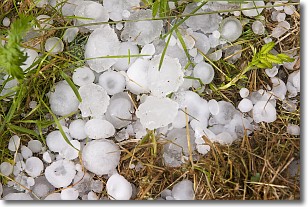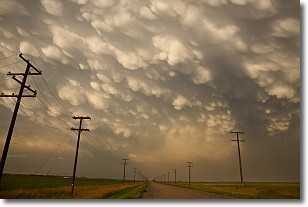Weather Alert in Washington
Special Weather Statement issued July 30 at 8:42AM PDT by NWS Seattle WA
AREAS AFFECTED: San Juan County; Lowlands of Western Whatcom County; Lowlands of Western Skagit and Northwestern Snohomish Counties; Port Townsend Area; Eastern Strait of Juan de Fuca; Western Strait of Juan de Fuca; Northern Washington Coast; Grays Harbor County Coast; Island County
DESCRIPTION: ...TSUNAMI ADVISORY IS IN EFFECT FOR THE WASHINGTON COAST AND STRAIT OF JUAN DE FUCA... * UPDATES...Tsunami waves continue to arrive along the Washington coast and the Strait of Juan de Fuca. * LOCAL IMPACTS...A tsunami capable of producing strong currents that may be hazardous to swimmers, boats, and coastal structures is expected. Widespread inundation is NOT expected. * RECOMMENDED ACTIONS...If you are located in this coastal area, move off the beach and out of harbors and marinas. Do not go to the coast to watch the tsunami. Be alert to instructions from your local emergency officials. Tsunamis often arrive as a series of waves or surges which could be dangerous for many hours after the first wave arrival. The first tsunami wave or surge may not be the highest in the series. * OBSERVED TSUNAMI WAVE HEIGHTS FROM EARLIER... La Push 1.3 ft Neah Bay 0.4 ft Westport 0.5 ft Toke Point 0.4 ft Port Angeles 1.2 ft * PRELIMINARY EARTHQUAKE INFORMATION... An earthquake occurred on Jul 29 2025, with a preliminary magnitude of 8.8 centered 315 miles SW of Bering Island, Komandorski. * TIDE INFORMATION... Neah Bay...Low tide of 1.3 ft at 958 AM PDT on Jul 30. High tide of 6.9 ft at 438 PM PDT on Jul 30. La Push...Low tide of 0.9 ft at 943 AM PDT on Jul 30. High tide of 7.4 ft at 415 PM PDT on Jul 30. Westport...Low tide of 1.2 ft at 956 AM PDT on Jul 30. High tide of 8.0 ft at 435 PM PDT on Jul 30. Port Angeles...Low tide of 2.2 ft at 1153 AM PDT on Jul 30. High tide of 6.4 ft at 651 PM PDT on Jul 30. Port Townsend...Low tide of 2.8 ft at 118 PM PDT on Jul 30. High tide of 8.2 ft at 811 PM PDT on Jul 30. Friday Harbor...Low tide of 2.7 ft at 147 PM PDT on Jul 30. High tide of 7.4 ft at 853 PM PDT on Jul 30. Seattle...Low tide of 3.4 ft at 214 PM PDT on Jul 30. High tide of 11.1 ft at 849 PM PDT on Jul 30. Tacoma...Low tide of 3.4 ft at 215 PM PDT on Jul 30. High tide of 11.5 ft at 852 PM PDT on Jul 30. This product will be updated as new information becomes available. Stay tuned to your local news source and NOAA weather radio for further information and updates. This product will be updated as new information becomes available. Stay tuned to your local news source and NOAA weather radio for further information and updates.
INSTRUCTION: N/A
Want more detail? Get the Complete 7 Day and Night Detailed Forecast!
Current U.S. National Radar--Current
The Current National Weather Radar is shown below with a UTC Time (subtract 5 hours from UTC to get Eastern Time).

National Weather Forecast--Current
The Current National Weather Forecast and National Weather Map are shown below.

National Weather Forecast for Tomorrow
Tomorrow National Weather Forecast and Tomorrow National Weather Map are show below.

North America Water Vapor (Moisture)
This map shows recent moisture content over North America. Bright and colored areas show high moisture (ie, clouds); brown indicates very little moisture present; black indicates no moisture.

Weather Topic: What is Hail?
Home - Education - Precipitation - Hail
 Next Topic: Hole Punch Clouds
Next Topic: Hole Punch Clouds
Hail is a form of precipitation which is recognized by large solid balls or
clumps of ice. Hail is created by thunderstorm clouds with strong updrafts of wind.
As the hailstones remain in the updraft, ice is deposited onto them until their
weight becomes heavy enough for them to fall to the earth's surface.
Hail storms can cause significant damage to crops, aircrafts, and man-made structures,
despite the fact that the duration is usually less than ten minutes.
Next Topic: Hole Punch Clouds
Weather Topic: What are Mammatus Clouds?
Home - Education - Cloud Types - Mammatus Clouds
 Next Topic: Nimbostratus Clouds
Next Topic: Nimbostratus Clouds
A mammatus cloud is a cloud with a unique feature which resembles
a web of pouches hanging along the base of the cloud.
In the United States, mammatus clouds tend to form in the warmer months, commonly
in the Midwest and eastern regions.
While they usually form at the bottom of a cumulonimbis cloud, they can also form
under altostratus, altocumulus, stratocumulus, and cirrus clouds. Mammatus clouds
warn that severe weather is close.
Next Topic: Nimbostratus Clouds
Current conditions powered by WeatherAPI.com




